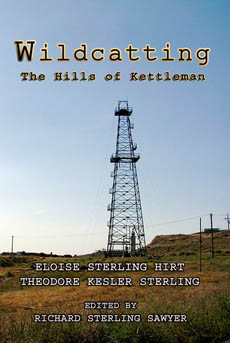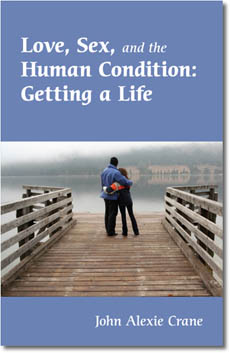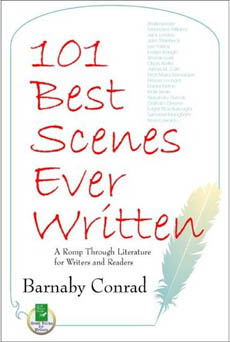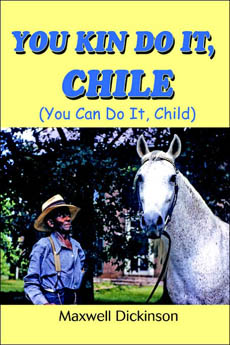Hot Off the Press
Santa Barbara may be known worldwide for its sunshine, beaches, and wineries, but those with the inside scoop know it’s the artistic and intellectual environment that really makes our city such a treasure. Among our greatest cultural gems are the many talented writers who live and work here in paradise. For this edition of Hot Off the Press, we have gathered recently published books by a few of the authors who make Santa Barbara such a richly creative community. The Independent contacted each writer for an exclusive interview.

Wildcatting: The Hills of Kettleman
Richard Sterling Sawyer
Richard Sterling Sawyer has crafted a historical novel about a familiar landscape in his new work, Wildcatting: The Hills of Kettleman, which he is also currently adapting into a screenplay. The crafting of this “real California story” was actually begun by his grandfather and great aunt in 1936 as an autobiographical work, and Sawyer has completed and edited the manuscript. It is an epic account in which scenery is “the story-a barren sheep farm no one wants is transposed into an oilfield everyone wants.” The original authors bring authenticity and immediacy to descriptions of landscape and characters alike. According to Sawyer, “The land-your environment where you have your heart, the growing-up experience at that place-always molds you and changes you, making you who you are, giving you values.” Wildcatting will be available from AuthorHouse in hardcover and paperback in December.

Love, Sex, and the Human Condition: Getting a Life
John Alexie Crane
To find absolute freedom in decision-making, reason, and love requires stripping away the demands of the media, the expectations of our peers, and institutional accountability. So says former Unitarian minister John Alexie Crane, who wrote his handbook in order to help others live wholly as themselves, with intent and purpose. “A lot of what holds us back from being what we might become,” said Crane, “has been imposed upon us by a vast array of outside factors and forces. For example, we were born into a particular family, an existing society, at a given point in history.” By seeking liberty from the past and learning how to operate passionately, he believes, we become aware of the limitations we place upon ourselves. The author’s clear writing, unrestrained by superstition or fundamentalism, “gently guides readers toward being free and fully alive by governing their sex and power drives with love and reason, then expressing them freely in everyday life.” Love, Sex, and the Human Condition, published by Trafford Publishing, is available in paperback in bookstores now.

101 Best Scenes Ever Written
Barnaby Conrad
According to legendary Santa Barbara writer Barnaby Conrad, “There is only one way to learn to write fiction, and that is by writing it-and, before that, reading it.” Conrad, pioneer of the Santa Barbara Writers Conference, has lived and worked all over the nation and world, and has recently compiled his favorite scenes from literature, film, and theater to highlight what makes a scene memorable. The book is categorized in chapters such as “Endings,” “Purely Visual Scenes,” “Revenge,” “Betrayal,” and “Romance”; readers will recognize favorite scenes and discover new ones. Each scene is accompanied by an explanation of what the writer wanted to convey, and why that was successfully achieved. Conrad said he wrote the book to expose readers “to some great parts of exciting and good writing from all genres,” and added, “Hopefully, the book will spur them to go to the sources.” The paperback is published by Quill Driver Books, and is available in bookstores now.

You Kin Do It, Chile (You Can Do It, Child)
Maxwell Dickinson
In her autobiographical novel, Maxwell Dickinson tells the story of her childhood in Tennessee, focusing on the enduring alliance she formed with Uncle Sandy, the ex-slave who tended her parents’ horses. “‘You kin do it, Chile,’ became a mantra that sustained me in life’s challenges,” Dickinson said, recalling Uncle Sandy’s favorite phrase. “I respected him, admired him, and sought his company whenever possible. I believe he felt the same.” In the book, the author relates her experience of her family’s move from familiar Tennessee to far-off and lonely California, and describes the kind old man who accompanied 60 Arabian horses and the family that had grown to become his own. Their bond defied social expectations of race and age, yet Uncle Sandy, said Dickinson, “wouldn’t take no for an answer. He gave me courage.” The novel includes a passage in which a Yankee friend asks the young child, “‘What color is your friend that you describe so eloquently?’ My six-year-old brows creased with wonder. ‘Bright,’ I replied. Uncle Sandy brought sunrays to my lonely childhood.” The book is published with iUniverse and is available now in paperback.



